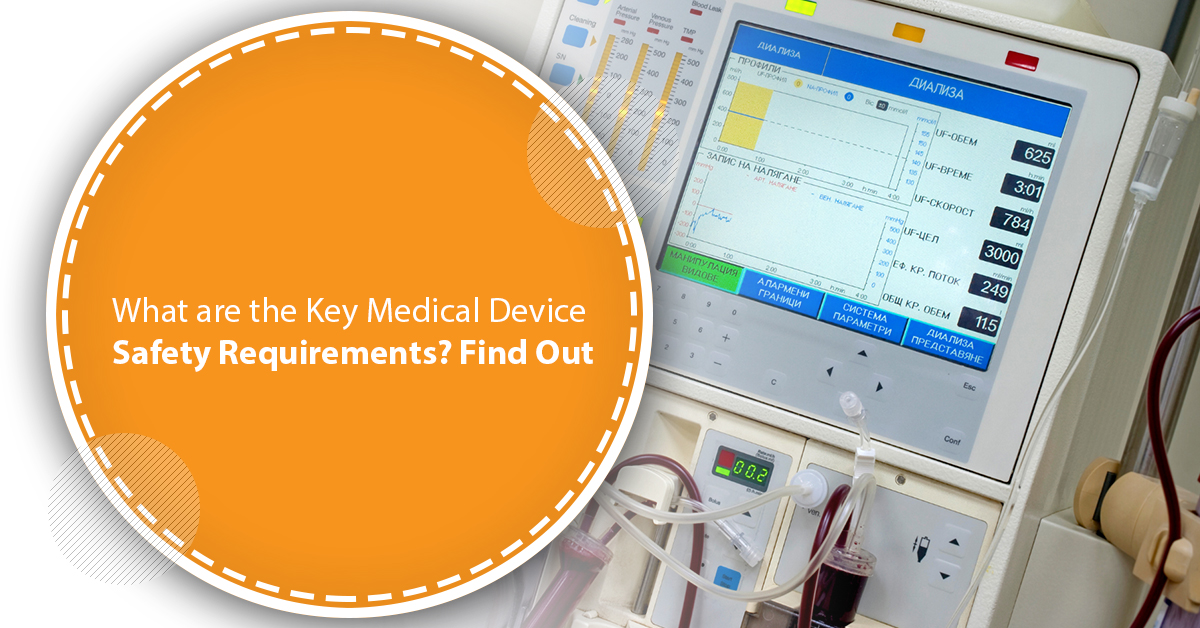What are the Key Medical Device Safety Requirements? Find Out
Quality management in the medical device industry is intrinsically linked to fulfilling certain safety requirements. The industry has been growing too fast with rapid innovation and the integration of technologies to offer excellent diagnosis and treatment solutions to patients. As new devices and equipment are evolving, it is becoming more challenging for the hospitals, clinics, physicians, diagnostic centers and pathological labs to decide on the evaluation criteria for choosing the right devices to provide their services. The most important thing is assuring patient safety while their devices are being used! Thus, medical device manufacturers must meet the medical device safety requirements with their specific quality management systems (QMS).
This blog provides short descriptions of the requirements for you if your business is into medical device manufacturing. There is a particular medical device quality standard, i.e., ISO 13485 which applies to companies involved in designing, manufacturing, distributing, or servicing of medical devices. It is paramount for your business to achieve the standard by meeting the standard’s requirements as well as safety requirements to demonstrate the quality and reliability of your devices. Here are the requirements.
5 Essential Medical Devices Safety Requirements
Protection from External Factors
The devices should be designed or manufactured appropriately to ensure they are always protected from external factors (mild to adverse factors). There are different stages that the devices go through after they are manufactured. They are stored as inventory, transported through various places, and then are ultimately used or installed in the desired place. Therefore, it should be ensured that they are in no way affected during storage or transit due to external conditions like high or cold temperature, atmospheric pressure, humidity, etc. Also, appropriate conditions should be ensured at the operating environment. Any unfavorable conditions must be prevented because it reduces the lifetime or service period of the devices.
Emergency Prevention
The manufacturers of various diagnostic equipment and imaging devices must ensure their safety from fire, electric and radiological hazards. The instruments or devices should be designed well considering these potential hazards so that patients, doctors and nurses are safe from all extreme emergency conditions. Ultrasound, magnetic resonance imaging, high-frequency radio waves, over-temperature, high voltage, automatic operation, etc. are some of the conditions associated with such devices. Thus, the complex designs, functional components, technologies and ergonomics of the devices must be checked and assured to be consistent for intended uses to prevent any operational failure or hazards.
Correct Choice of Raw Materials
The manufacturers should also put significant importance on the raw materials or components used in the devices to ensure the safety of patients. Their quality should be evaluated too to ensure they are fit for using in the production of devices. To choose the materials, manufacturers need to consider a lot of aspects such as durability, wear and tear resistance, strength, toxicity, rust and stain resistance, biocompatibility, and so on. While selecting the raw materials, you need to consider these aspects to ensure that the medical devices or equipment is non-reactive to skin, body tissues or fluid, and hair to prevent allergies or other physical reactions in the patients or users.
Packaging Safety
The medical devices should be packaged in a way that their outer layer, functional specifications, intended uses, or operational competence are not at all affected. The devices or instruments that are fragile must be packed with customized materials like corrugated inserts. Moreover, the packaging materials should also be assessed to ensure they are hygienic and will no way affect the cleanliness of the devices during the entire time period of storage and transportation.
Safety from Contamination or Infections
The manufacturing processes of the devices should eliminate or minimize the risks of infection or contamination to the patients, nurses, doctors, and other users who will come in direct contact with the devices. The designing of devices should ensure safe handling, sterilization whenever or wherever required, and eliminate risks of any microbial exposure or leakage.
These are the most crucial medical device safety requirements that you must fulfill for your medical devices. There are a few more related to other aspects such as labeling of devices, minimization of risks to persons who transport the devices, experience and technical knowledge of the users, safety from risks in the normal conditions/ environment where devices are intended to be used, and safety from residual risks.
Final Word
The medical device manufacturers must oblige with the key functional, quality and safety requirements to ensure the consistency of their devices when they are used. The requirements for quality and safety are guaranteed when you achieve the internationally recognized quality certification for medical devices. Achieving the certification enables you to meet compliance of your devices with accepted regulations of the medical device and healthcare industries which confirms their operational reliability and safety from risks.
If you want to prepare your medical device manufacturing businesses to achieve quality certification and assure the safety of your devices, compliance experts at Compliancehelp Consulting LLC can assist you. Get in touch to enquire more about our services.

